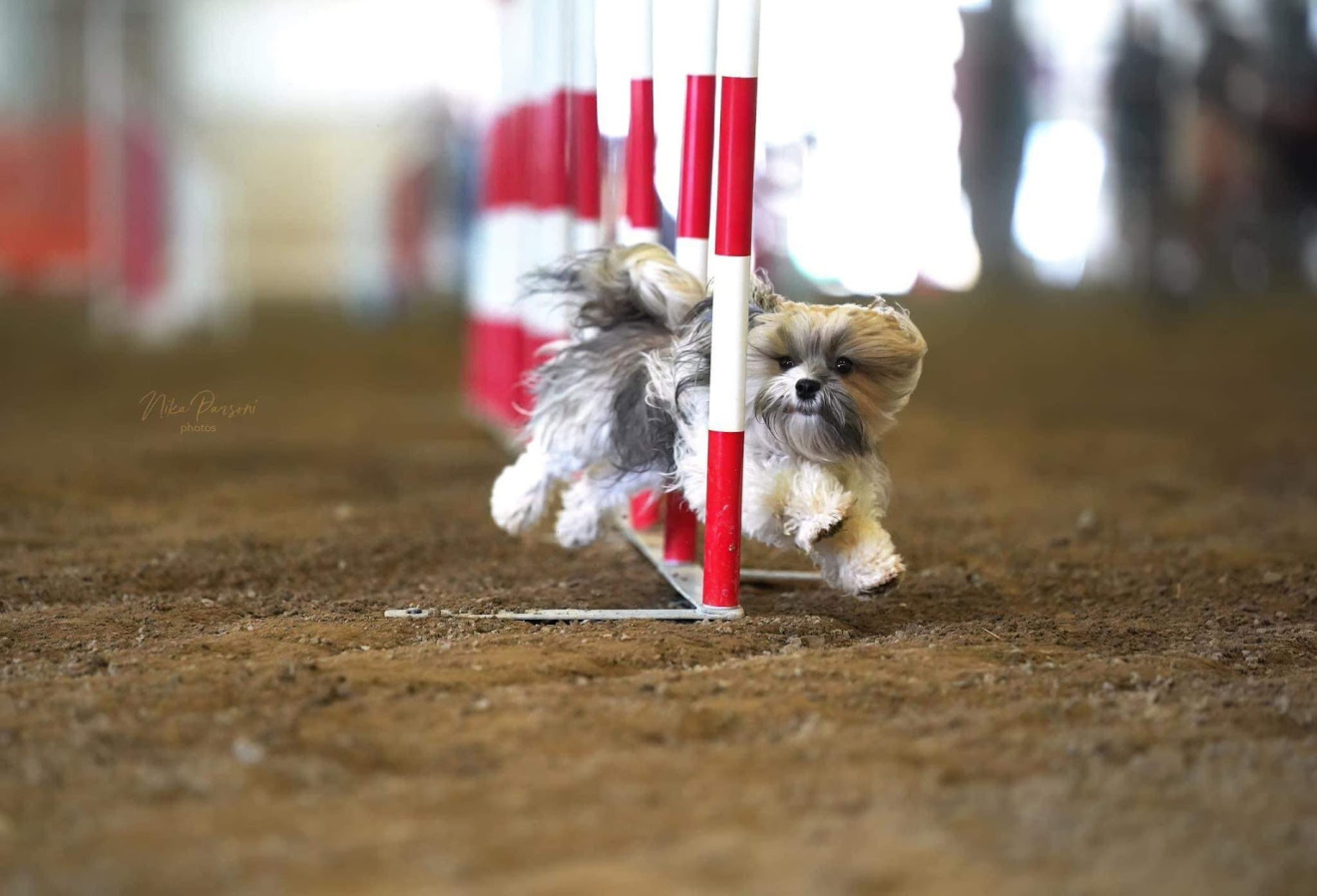
Health testing
Havanese are known to be a sturdy little breed with general good health; however, as with all dog breeds, there are some health issues that can pop up. Careful breeders screen for these issues in dogs intended for breeding. Some of the health issues that can appear within the Havanese breed are luxating patellas (slipping kneecaps), hip dysplasia (loose or malformed hips), heart issues, hepatic microvascular dysplasia (liver issues), juvenile cataracts, and autoimmune issues.
Alegria takes these health concerns seriously and strives not just to breed healthy puppies but also to improve the overall health of the Havanese breed. While there can be no guarantee of a perfect dog (we are working with nature), we do the following tests on our breeding dogs to minimize the odds our puppies will be born with health issues.
Patellas, Hips, and Eyes (CHIC)
All our breeding dogs undergo the tests required to get what is known as the dog’s “CHIC number.” The Orthopedic Foundation for Animals (OFA), the organization that runs the CHIC program, describes the program as follows:
"The OFA created the Canine Health Information Center (CHIC) by partnering with participating parent clubs to research and maintain information on the health issues prevalent in specific breeds. We’ve established a recommended protocol for breed-specific health screenings. Dogs tested in accordance with that protocol are recognized with a CHIC number and certification.
At OFA, we recognize that the more information stored and accessible in these databases, the better it will be for every breed. And so we encourage all breeders to attain CHIC Certification if their breed participates in the CHIC program.
A dog achieves CHIC Certification if it has been screened for every disease recommended by the parent club for that breed and those results are publicly available in the database."
For a Havanese to get a CHIC number and certification, the dog must have its patellas assessed and rated, its hips examined with special x-rays (called PennHIP or OFA hips, depending on the x-ray process used), and its eyes examined (known as CAER [Companion Animal Eye Registry]).
Getting the CHIC number is the minimum any Havanese breeder should do. In addition to the recommended CHIC testing, Alegria only breeds those dogs who pass the following additional tests:
Heart
Our dogs’ hearts are examined at 12 months of age or older by a veterinarian according to OFA standards to rule out the presence of a heart murmur or other signs of a congenital heart condition.
Liver
We also have our breeding dogs tested for bile acid and liver enzyme levels. This is a blood test that helps us determine the health of the dog’s liver. Many Havanese breeders do not do this test; however, researchers believe that many toy breeds have what is known as hepatic microvascular dysplasia (MVD). The condition affects the smallest blood vessels in the liver and interferes with the liver’s normal function. Although dogs with MVD can live long and healthy lives, MVD can also lead to symptoms such as picky eating, gastrointestinal issues, urinary crystals, and smaller size. MVD is unfortunately common in toy breeds probably because breeders unknowingly selected for it while trying to downsize their breeds.
Havanese are one of the toy breeds affected by MVD. While we do not know exactly how widespread it is, researchers estimate that as many as 65–90% of Havanese have MVD (Tobias, 2020). One of my breeding missions is to reduce this percentage in the dogs I breed and to educate other breeders in the hope of reducing this percentage and eventually eliminating MVD from the breed entirely.
Genetic Diversity (Autoimmunity, Cancer)
Autoimmune diseases, such as allergies, diabetes, and certain types of arthritis, can pop up in any breed. Little is understood about what causes autoimmune diseases in dogs or humans. But one thing that has shown to lead to increased autoimmunity is the lack of genetic diversity within a breed. Linebreeding, where breeders mate parents who are not first- or second-degree relatives but share a common ancestor, is a common practice in animal breeding to maintain or improve specific traits. Unfortunately, this practice, when done too frequently, undermines the genetic diversity of a breed and increases the frequency of autoimmunity in a breed. A lack of genetic diversity also contributes to the incidence of cancer and other recessive diseases.
To improve the genetic diversity of the dogs we breed, we dogenetic diversity testing on all our breeding dogs through the University of California, Davis. When choosing our breeding pairs, we look at both diversity in the prospective parents’ pedigrees and the diversity between the proposed breeding pair. We use a program called BetterBred, which maintains a large genetics database, to analyze the genetics of the possible pairings to ensure the parents are genetically unrelated.